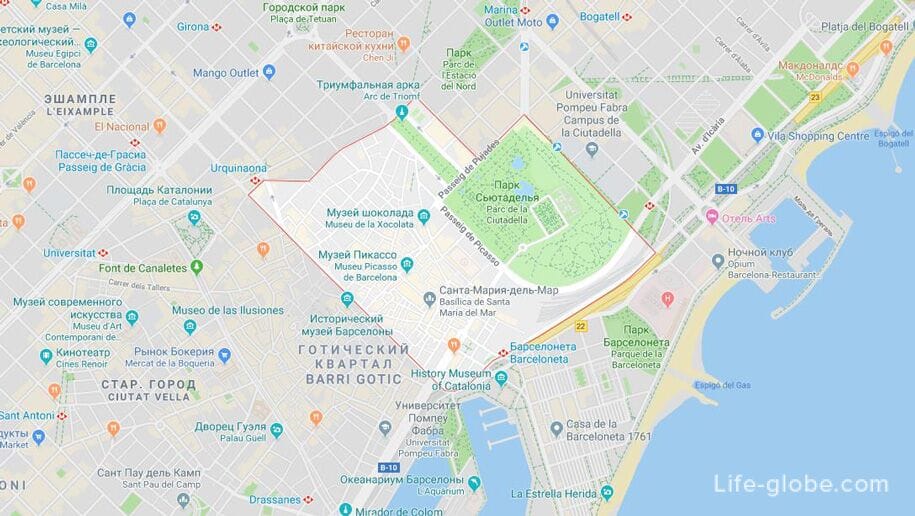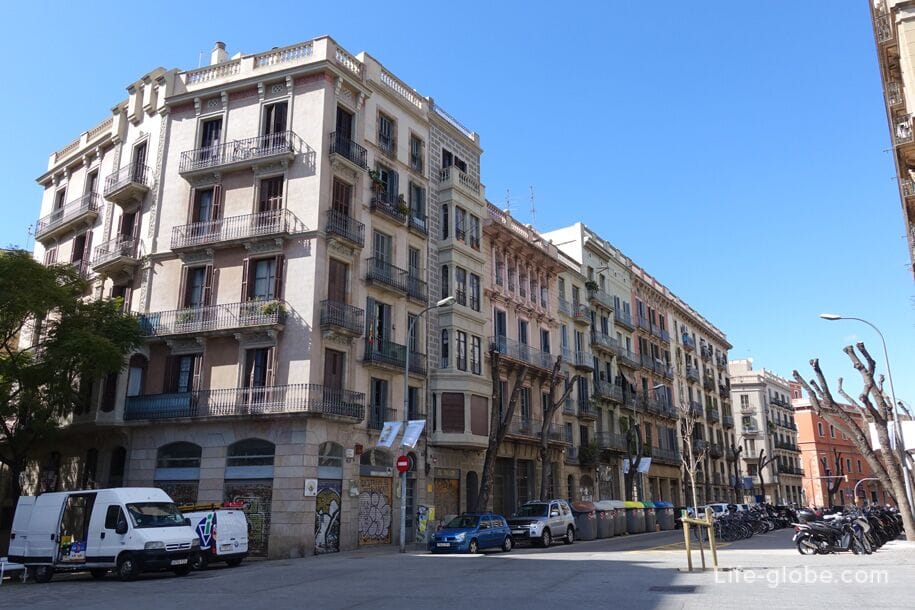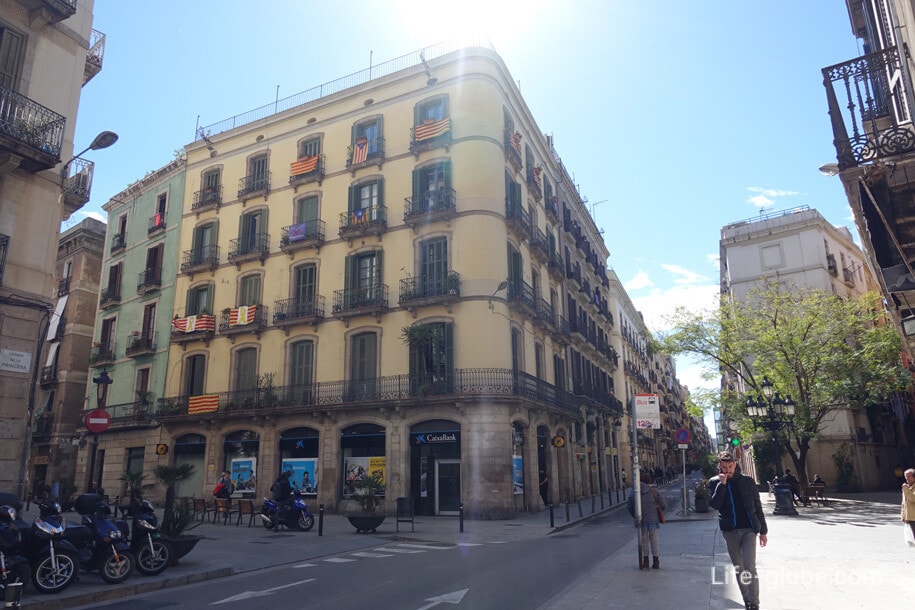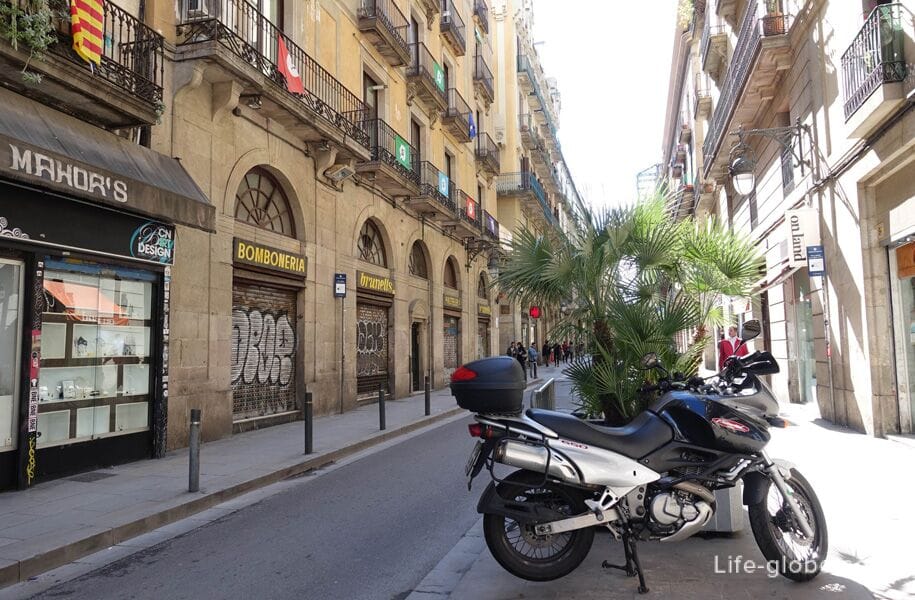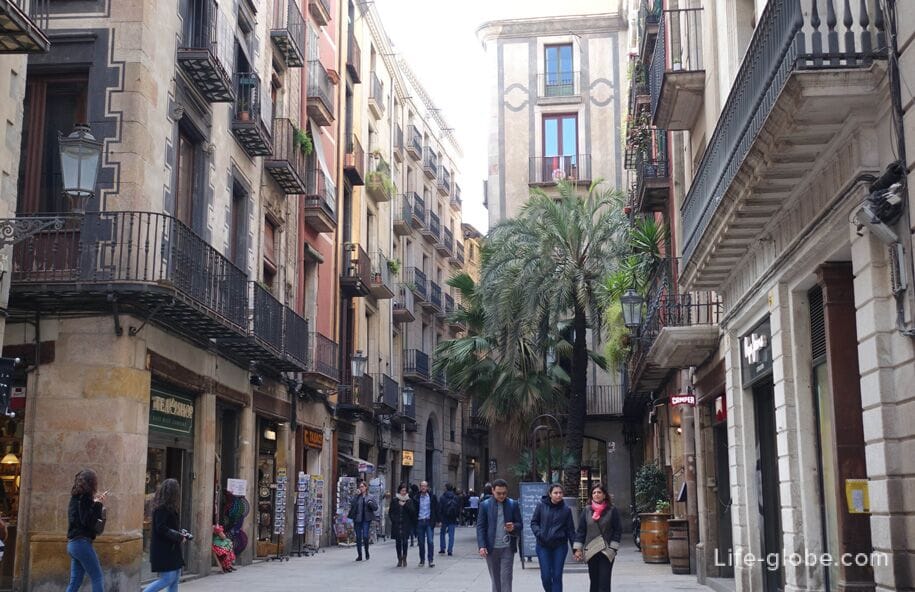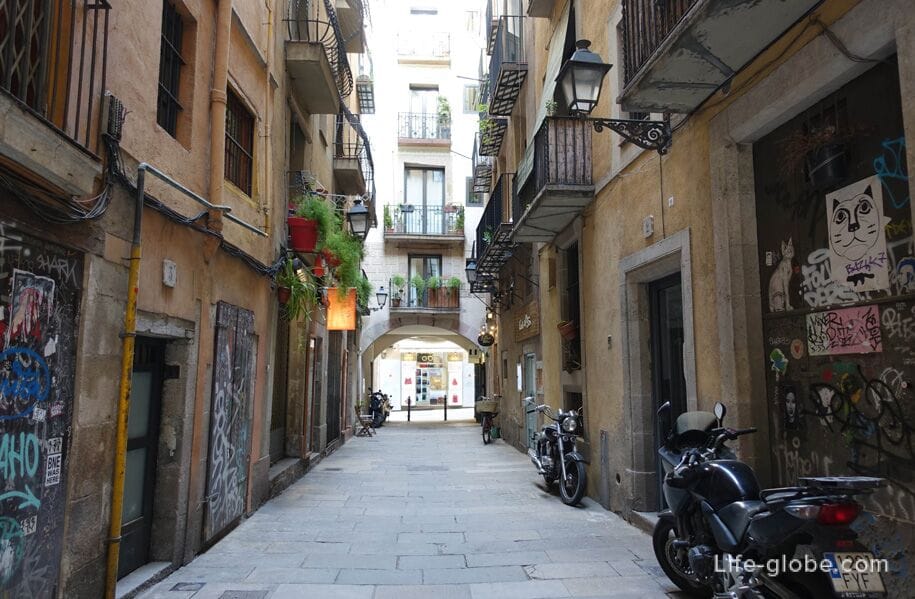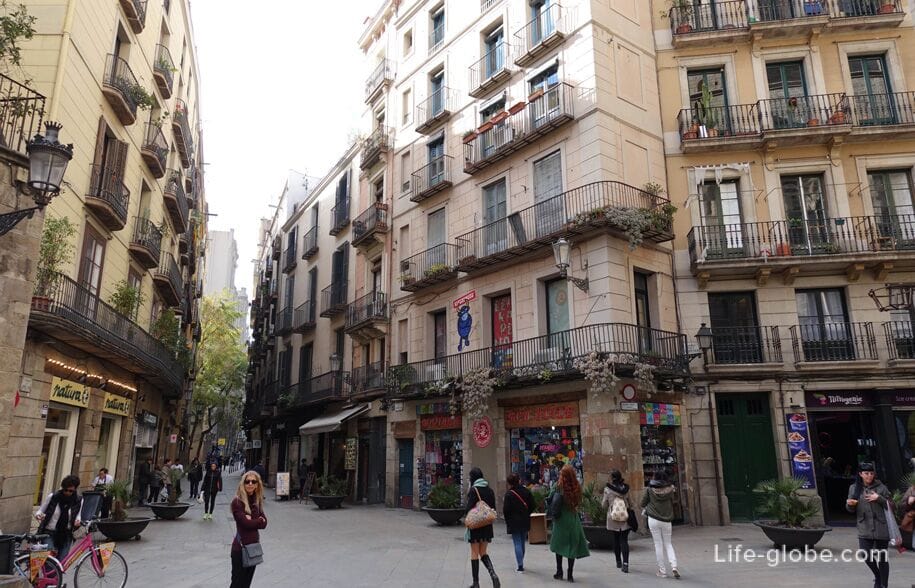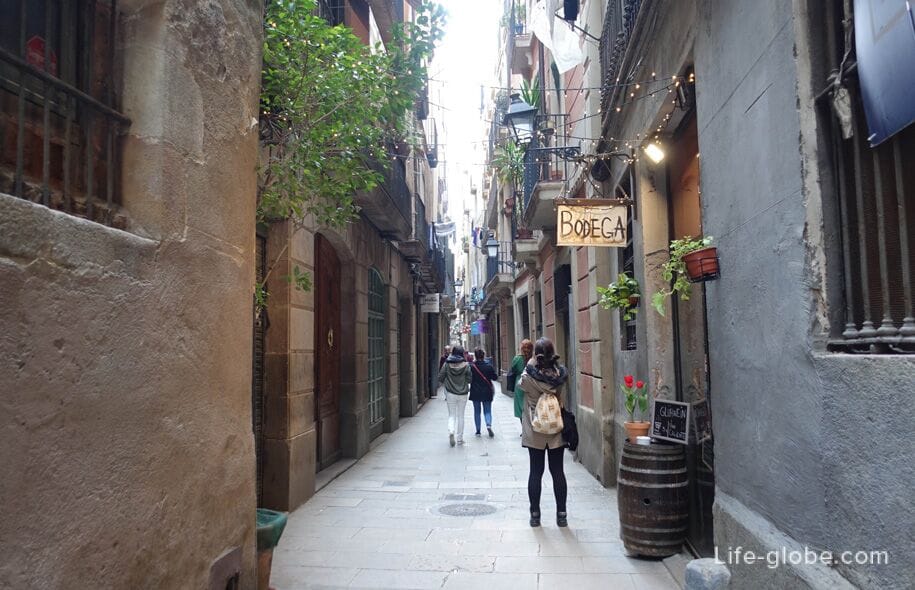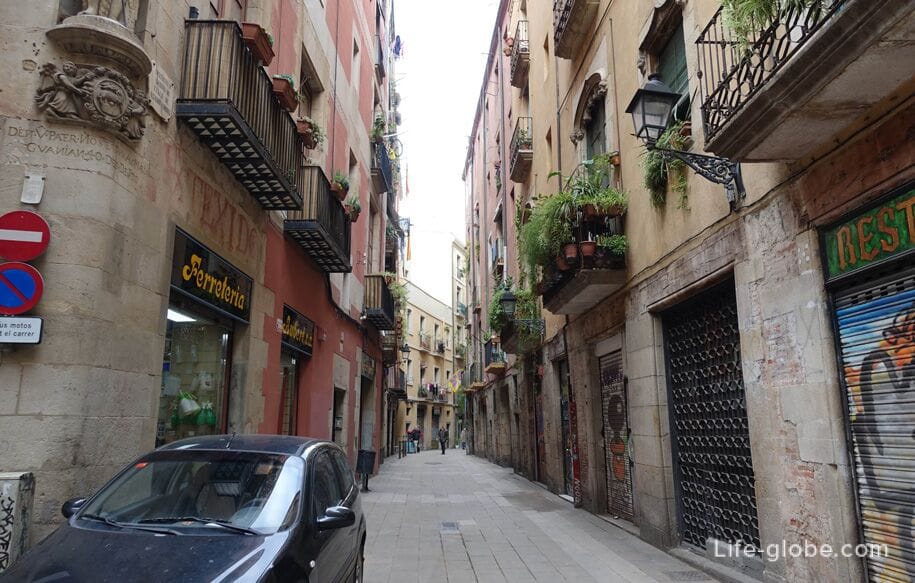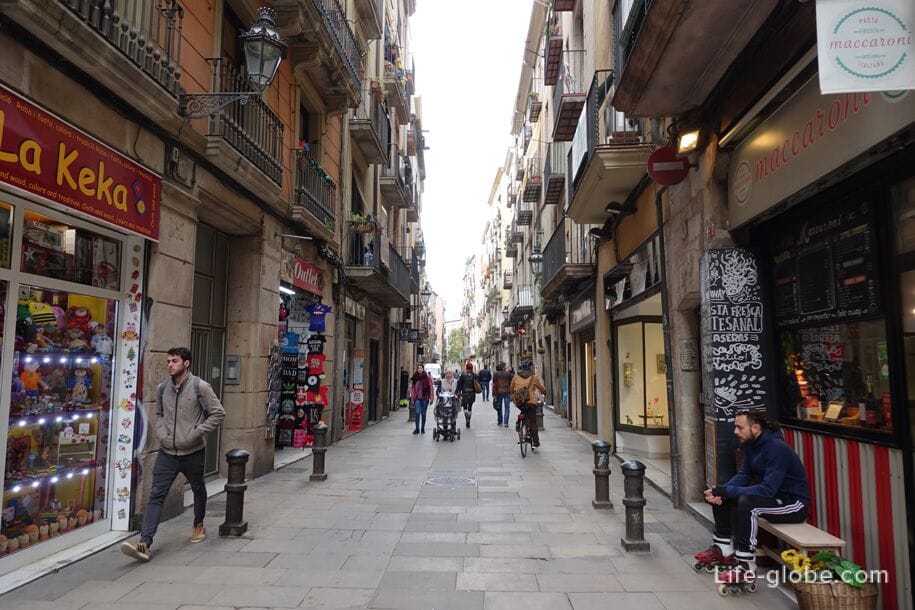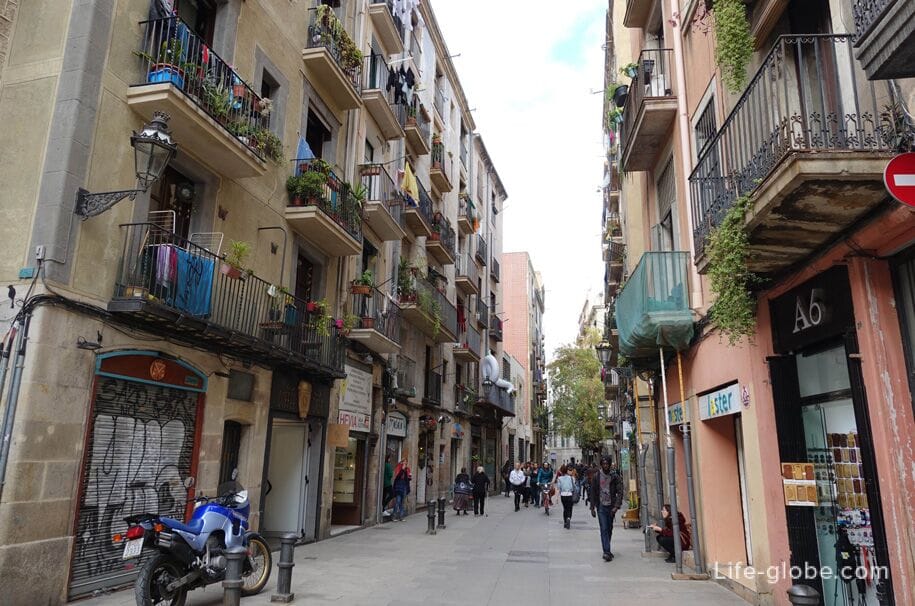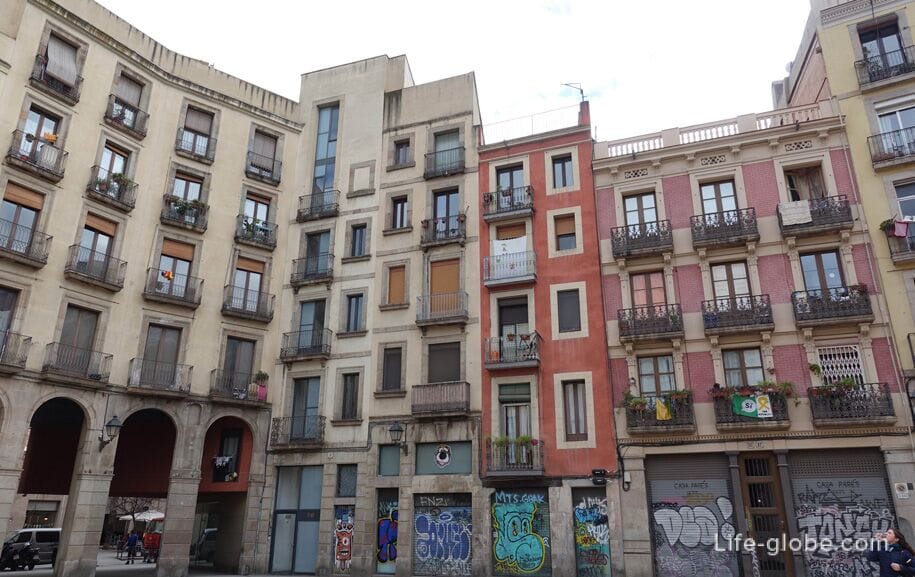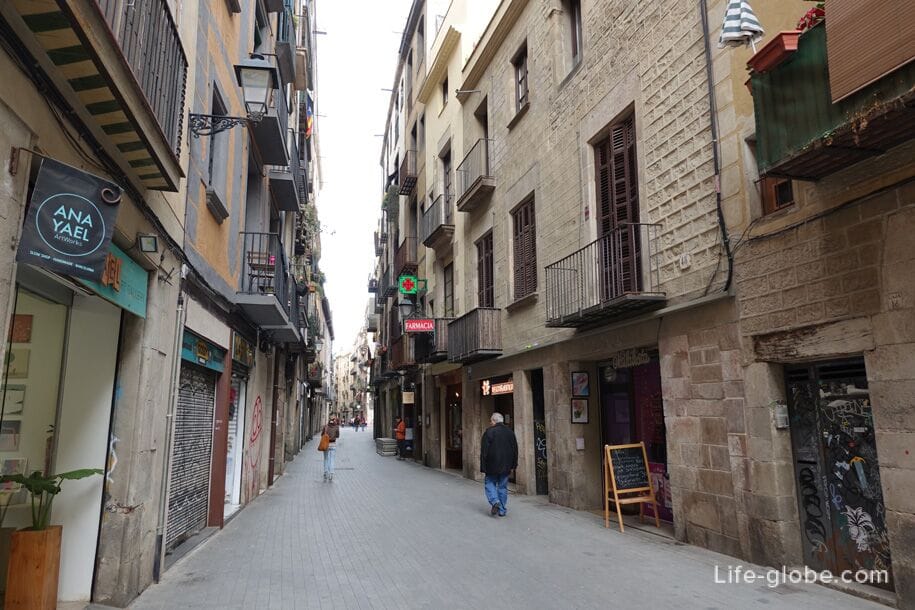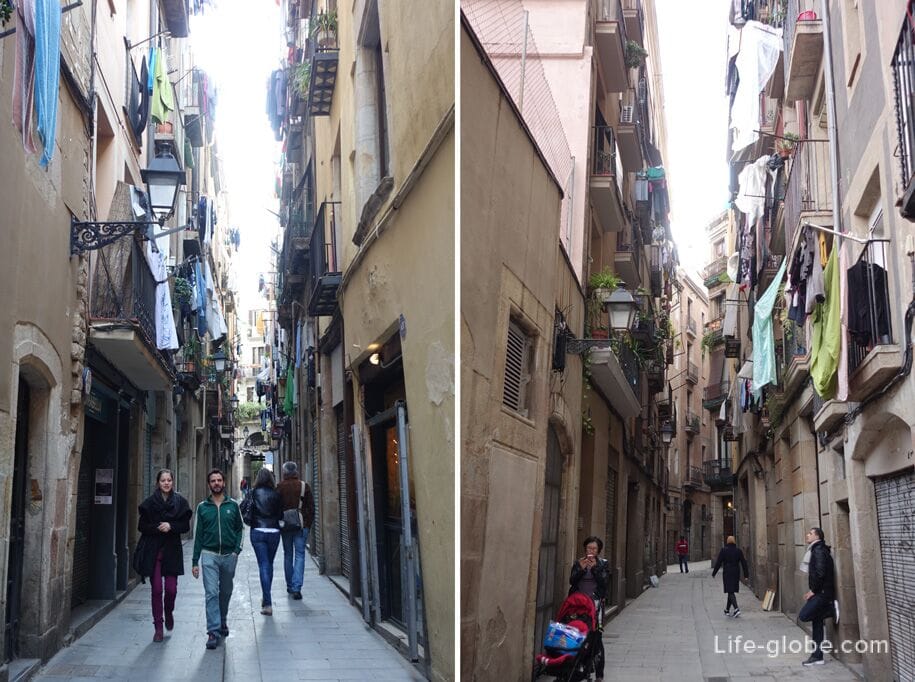
San Pere, Santa Caterina and La Ribera (Sant Pere, Santa Caterina i la Ribera) is a subdistrict, a part of Barcelona's Old town and educated, in turn, three small historical similar neighborhoods:
Sant Pere (Sant Pere), named after the monastery of San Pere de Les Puelles;
Santa Caterina (Santa Caterina), located in the center of the subarea, and where the homonymous market;
La Ribera (la Ribera), many of the buildings which date back to the late middle ages. It was a rich quarter in 13-15 centuries, then he was on the beach, and the area that today is called Barceloneta was still an island.
The district of Sant Pere, Santa Caterina and La Ribera is located between the Gothic quarter (in the West), the Barceloneta area (sea side), also related to the Old town of Barcelona, Trafalgar street (Carrer de Trafalgar, the Eixample district to the North) and Sant martí (Sant Martí - West).
The monastery of San Pere de Les Puelles (Parròquia de Sant Pere de les Puelles) is a Benedictine monastery of the 10th century, Romanesque / Gothic style.
Count Sunyer I and his wife Richilde Toulouse he founded a convent near the ancient Church dedicated to San Saturnino. The Church was consecrated on June 16 945 Bishop Gilroy.
At the moment, from the original building remained only a small part. This is partly due to the destruction and partly because of the poor restoration.
It is known that the monastery is consisted of two floors. The bottom had a Romanesque style from the 11th century, while the upper was created in the Gothic style and was built around 1322. Some elements of the monastery was saved and held at various museums. In the area where the present chapel of the Blessed remains of the old Church of San Saturnino, which preceded the San Pere de Les-Puelles. The monastery had a bell tower known as the Tower of Birds (Torre dels Ocells), which was destroyed during a fire in 1909.
In the octagonal bell tower is a bell Dating back to 1752, in total there are six bells.

The Palace of Catalan music (Palau de la Música Catalana) is a concert hall designed in the Catalan art Nouveau style by the architect Luis Domenech and Montaner.
The Palace was built between 1905 and 1908 for the Orfeó Català, a choral society founded in 1891 that was a leading force in the Catalan cultural movement that became known as the Renaixença (Catalan rebirth). The Palace was inaugurated February 9, 1908.
In 1997, the Palau de La Música, the Catalan was included in the list of UNESCO world heritage site along with hospital de Sant Pau.
Today, more than half a million people a year attend musical performances held in the Palace that range from symphonic and chamber music to jazz and Cançó (Catalan song).
The façade is rich in decorations, incorporating elements from many sources, including traditional Spanish and Arabic architecture, which harmoniously combines brick and iron, mosaics, stained glass and glazed tiles, columns and balconies, busts, and sculptural groups.
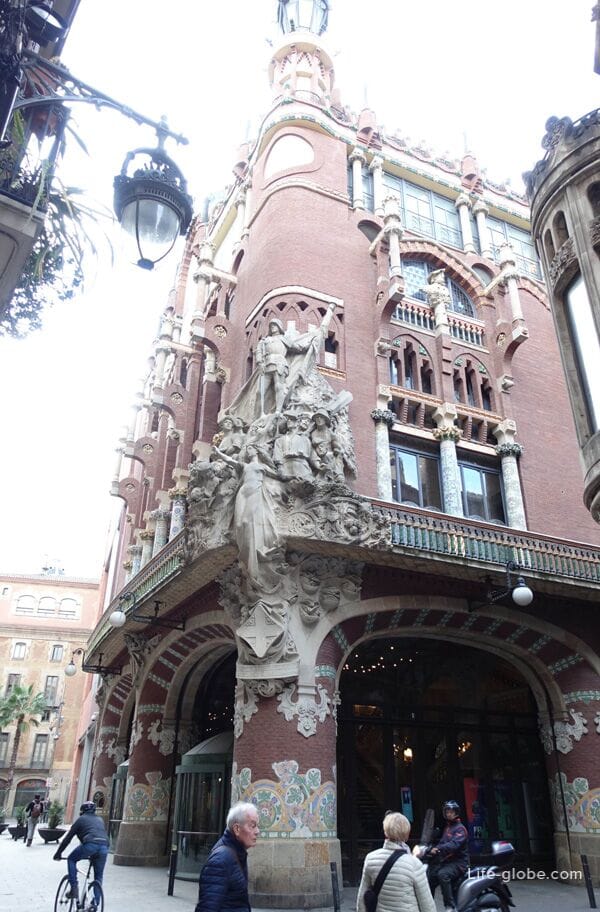
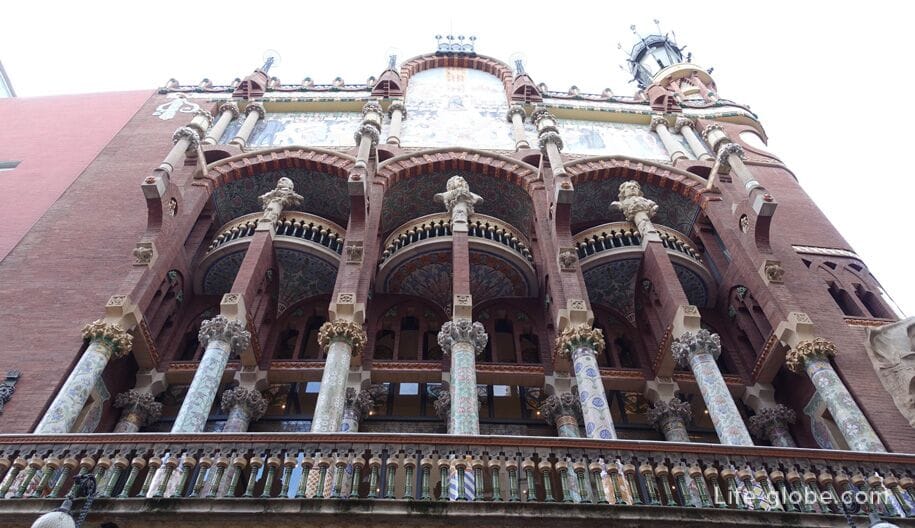
The Palace of Catalan music is adjoined by the Petit Palau (Petit Palau), built in 2004 and created in the course of additions to the main building. It seats 538 people and features the latest audiovisual technology and is equipped with variable acoustics for different types of music and spoken words.
The façade of a structure light and transparent as the Palace itself, but at the same time it is modern, it can accommodate various cultural, social and business purposes.
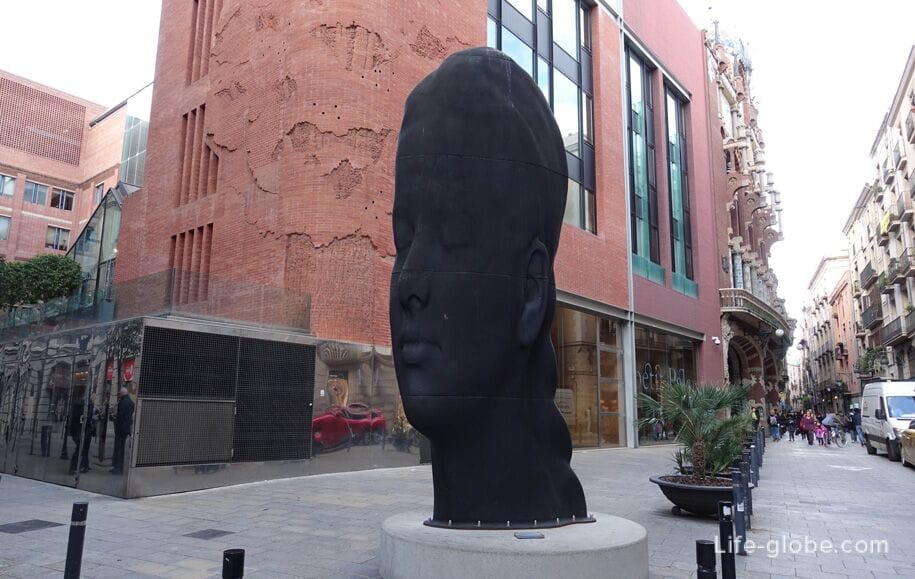
On the square near the Palace are several historic buildings.
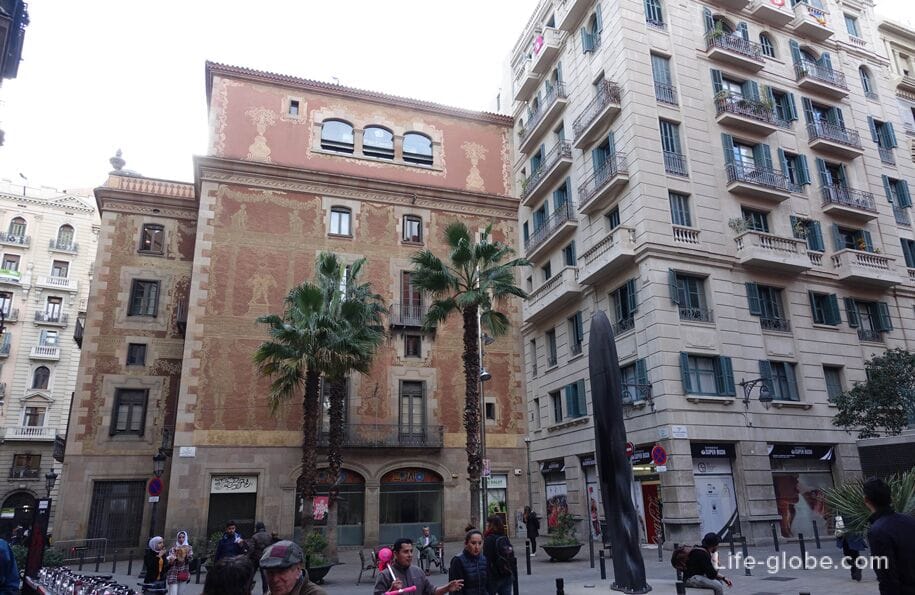
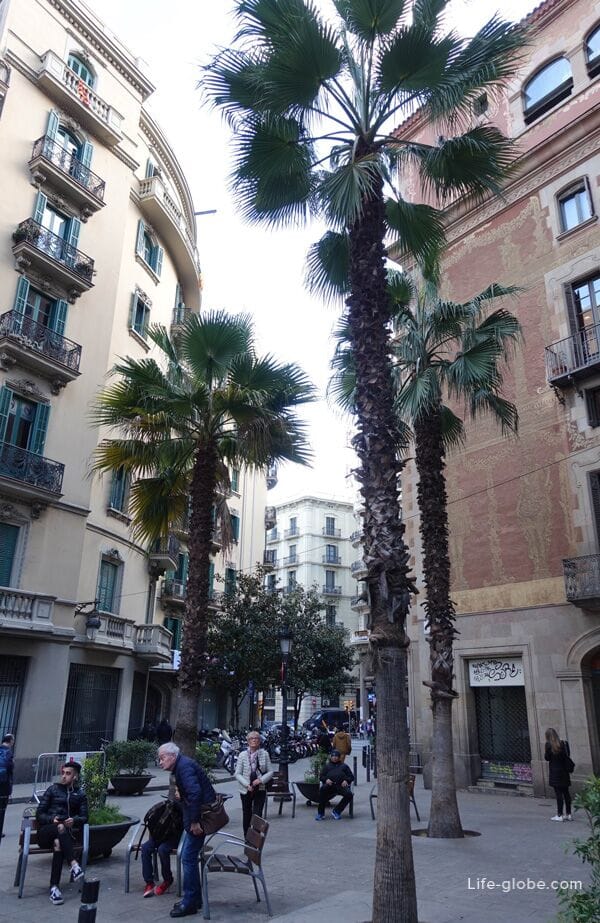
Notable area of Sant Cugat (Plaça de Sant Cugat).
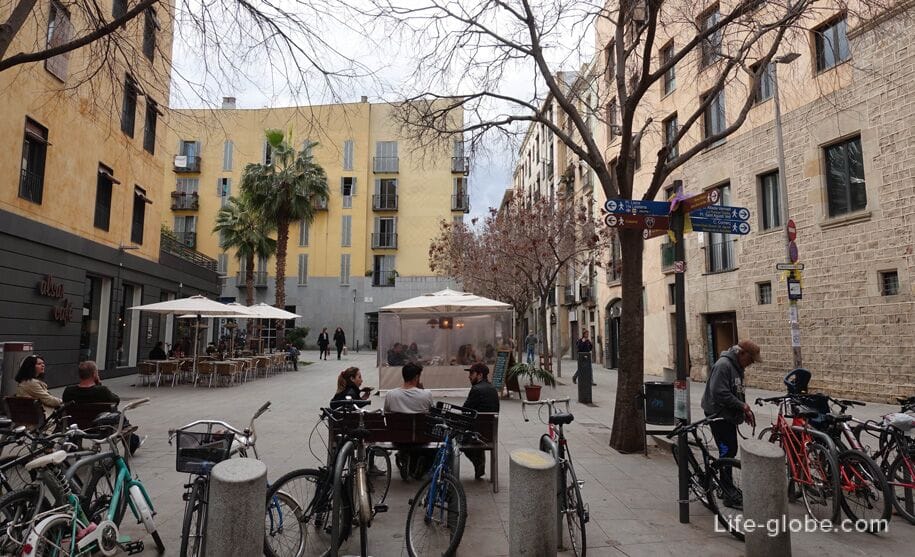
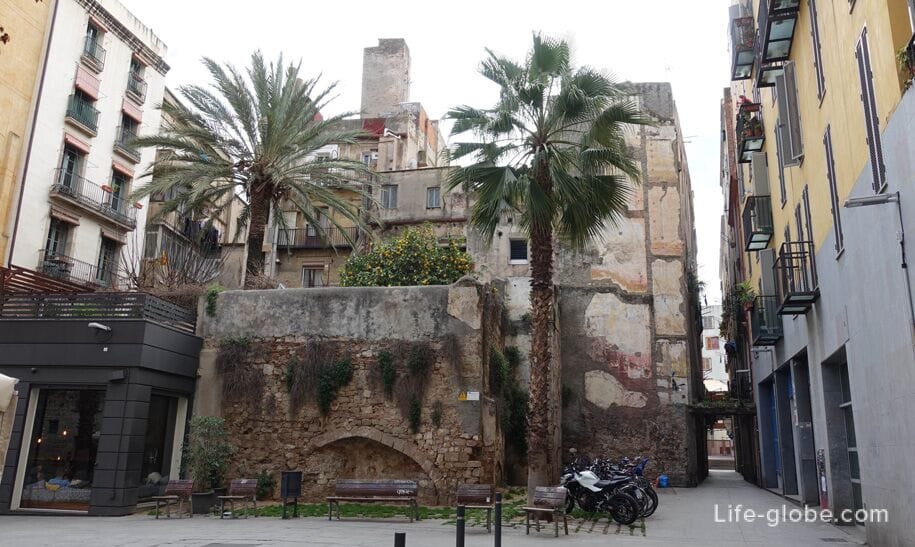
The market of Santa Caterina (Mercat de Santa Caterina), which is a isolated building.
The market was built on the site, which until 1837 was occupied by the Dominican convent of Santa Caterina in Barcelona.
The original neo-classical market building was built in 1847. The market was opened in 1848 and became one of the first market in the city.
Later, during the reconstruction, the building was rebuilt by the Studio EMBT Architects and opened on 10 may 2005. From the original neoclassical building kept the main and side facades.
In the market, in addition to the kiosks with food, several bars and a restaurant.
Market hours: Monday, Wednesday and Saturday from 7:30 to 15:30 hours; Tuesday, Thursday and Friday from 7:30 to 20:30 hours. Attention! Opening hours may vary, please check before visiting.
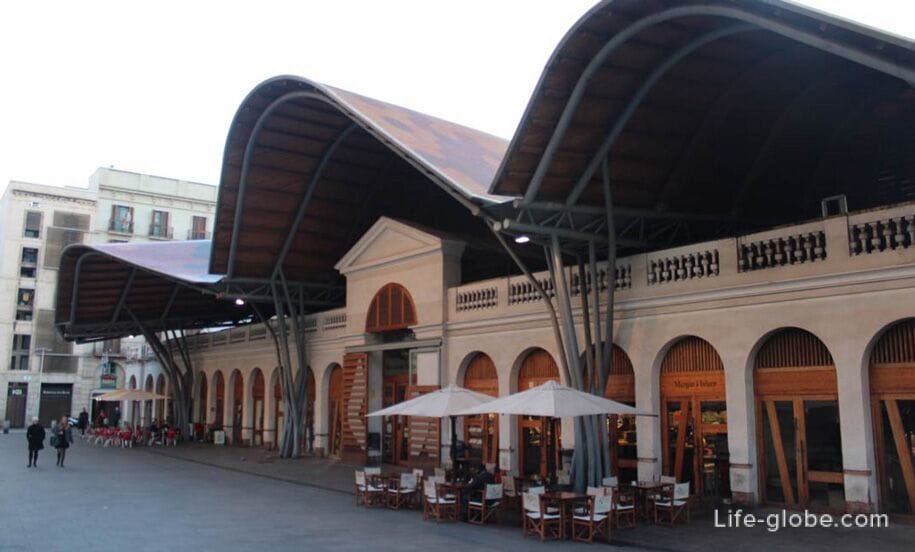
Chapel of Marcus (La Capella d'en Marcús) is a small Roman chapel with a single nave and a wall bell tower crowning the main façade.
The chapel was built outside the city walls, near one of the main access roads to Barcelona, in the middle of the 12th century with funding from Bernat Marcus, bourgeois Barcelona, who also donated the land in the same place, a cemetery for the poor (the present size of Marcus), and he later founded the hospital.
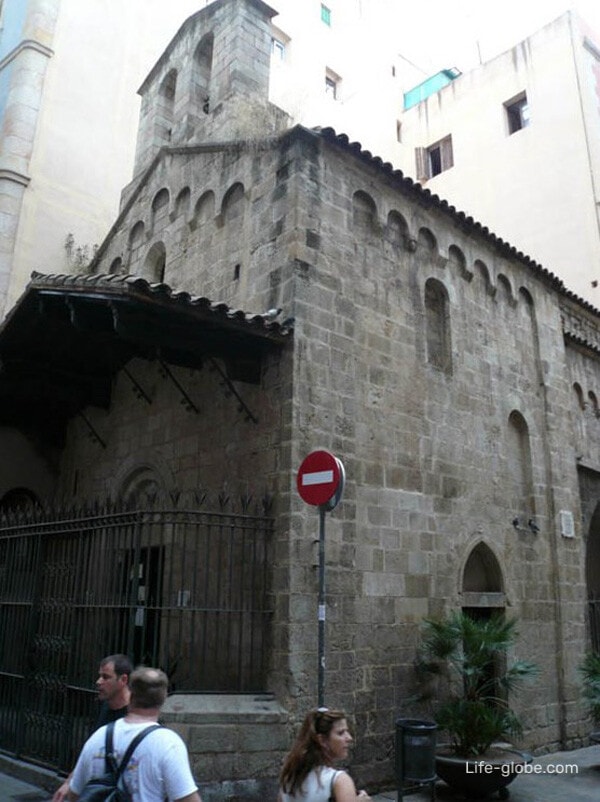
Museum of chocolate (Museu de la Xocolata) is a dynamic facility promoted by the Barcelona pastry shop, located in the old convent of St. Augustine. The Museum's collection represents a journey through the origins of chocolate, its arrival in Europe and spread.
The chocolate Museum is located in a historic building already had a connection to chocolate. In the 18th century the Bourbon army loved to consume this product, and, according to the ordinances, chocolate was present in the menu of military academies of the century: "For Breakfast each cadet and officer will be one and a half ounces of chocolate...".
Since the opening, since the 15th century, chocolate has played a significant role in the economic and social structure of the city of Barcelona. Barcelona's port acted as a starting point of a product for its commercialization and distribution in Europe.
It is in the city, at the end of the 19th century, it was considered the first institution that turned chocolate as a beverage in the solid product.
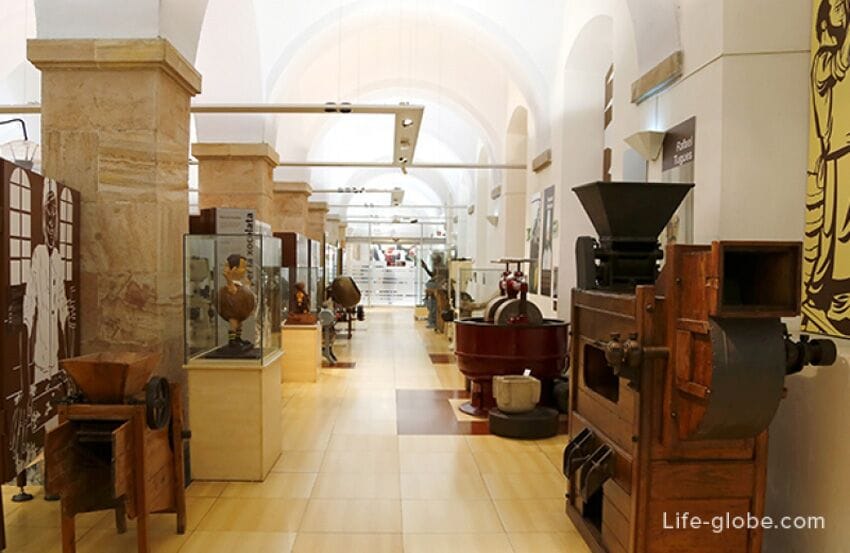
The triumphal arch of Barcelona (Arc de Triomf Barcelona) - one of the most famous monuments of the city built as the main entrance of the world exhibition of 1888, held in the Park of Ciutadella. Since then, arch has become strongly associated with the architecture of the city and joined the list of sights of Barcelona.
A monument to classical forms and proportions, but with a sculptural, decorative trim, filled with symbolism, together with the Boulevard and the monumental building of the Supreme court of Catalonia, created a magnificent ensemble of combinations of styles of architecture and nature, producing a lasting impression. Read more about arc de Triomphe in Barcelona...

A monument to the former mayor of Barcelona Francesc Rius and Taulet (Estàtua de Francesc Rius i Taulet), located near the arc de Triomphe.

Park of the Citadel or Ciutadella Park (Parc de la Ciutadella) - green area with an abundance of attractions, places for walking and recreation, lake, fountains and sculptures is the first major city Park, appeared in Barcelona, the creation history of which originates from the 18th century.
The most famous attractions of the Park are thefountain, the Cascade, the lake, the castle of the Three Dragons, orangeries, Palace of the Parliament of Catalonia and Church of Castilla de La Ciutadella.
Also within the Park is the Barcelona zoo. More info about Park of La Ciutadella in Barcelona...
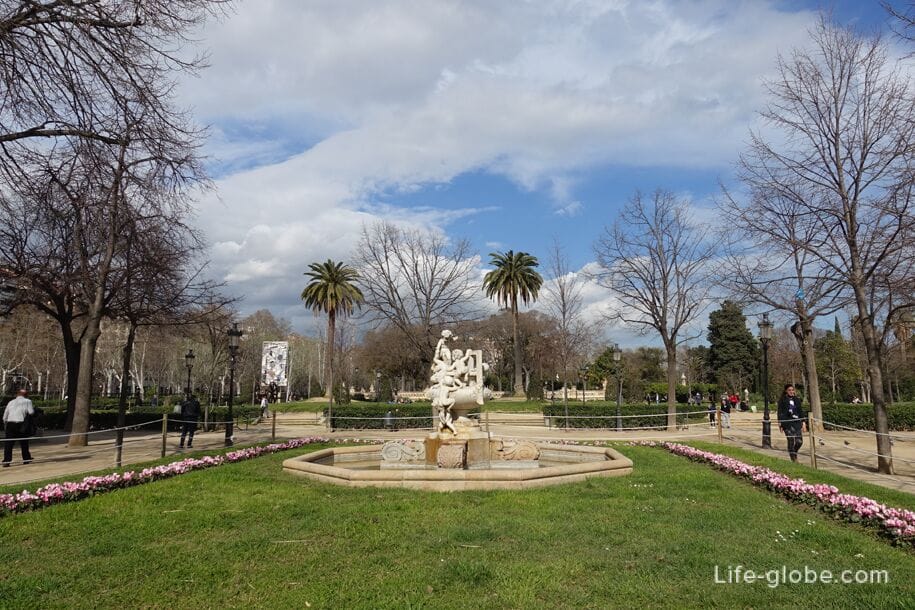
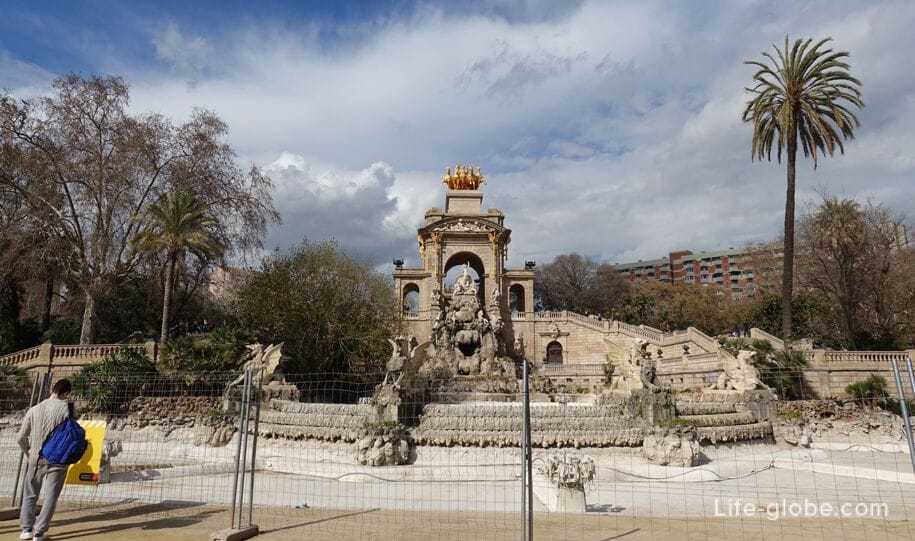
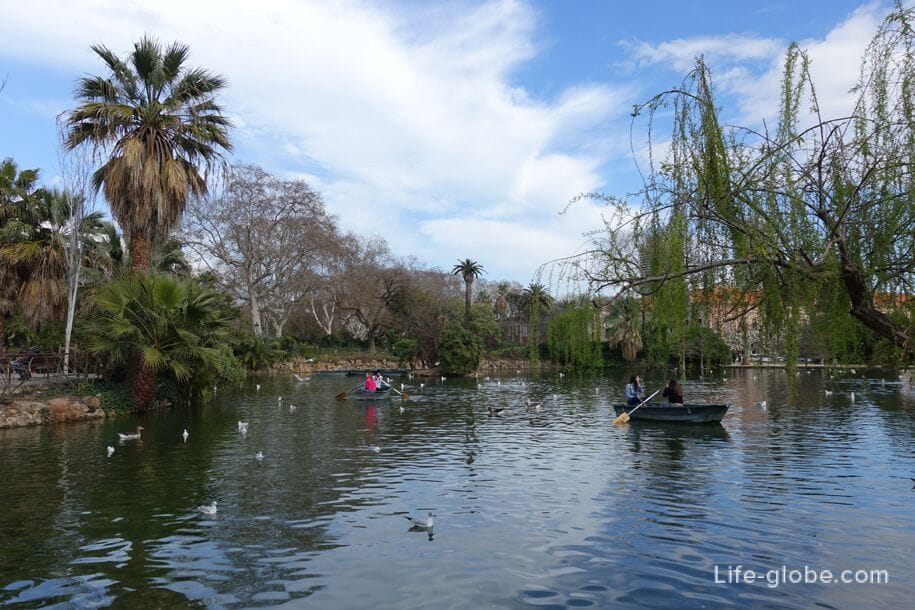
The lower part of the district of La Ribera, located just below the streets of Princesa (Carrer de la Princesa) and leading to Barceloneta, often referred to as "El born". This is one of the most fashionable tourist areas of the old town, a popular place for expats, contains many art boutiques, bars and cafes.
The name "Bourne" comes from the old market of 19th century - "the born Market", is now transformed into the cultural centre of El born (El Born Centre de Cultura i Memòria), which is an archaeological zone with the remains of houses and streets of Barcelona, from the Roman period until the early 18th century, as well as workshops, souvenir shops and several shops. Read more about the born market in Barcelona...
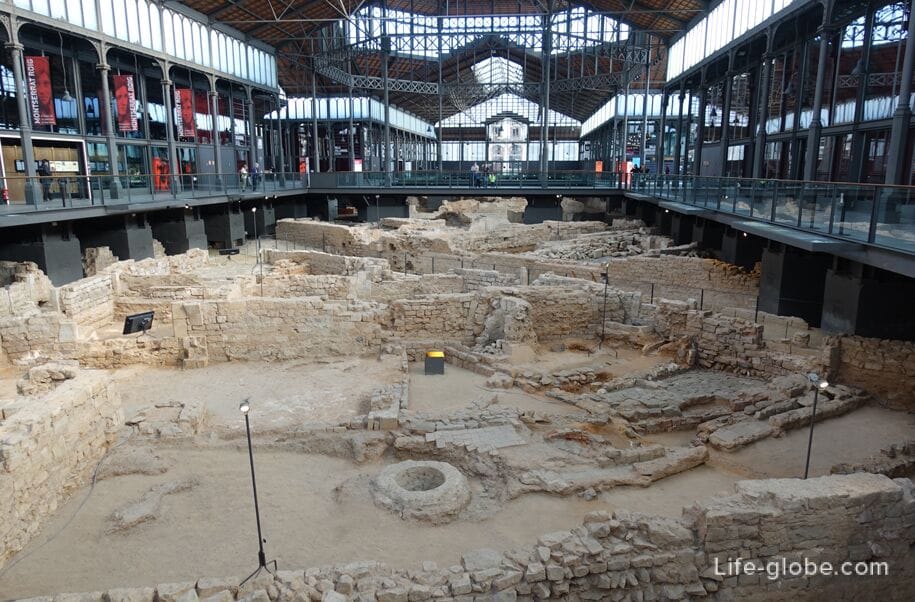
From the market moves of the same name born the borne (Passeig del Born).

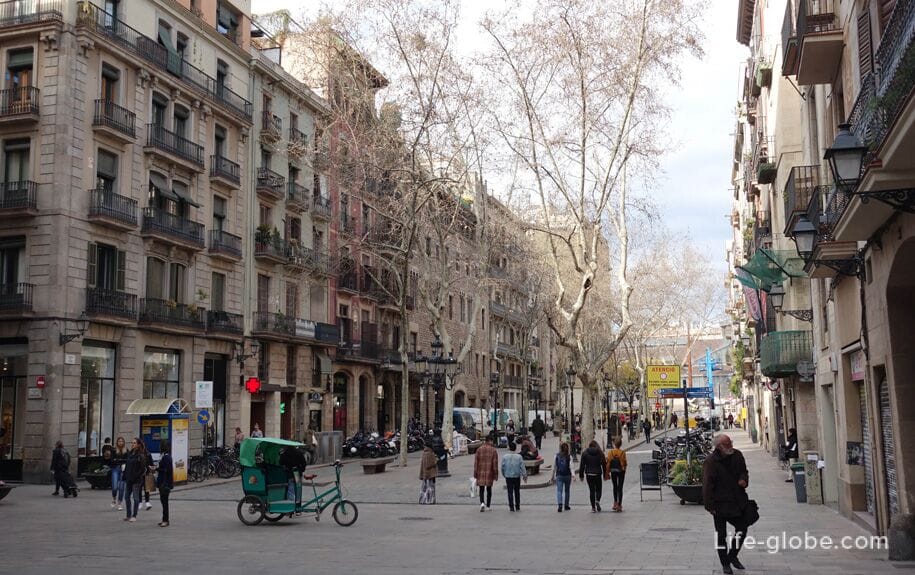
Boulevard Bourne leads to the most significant attractions in the district of La Ribera , the Basilica Santa Maria del Mar (Basilica de Santa Maria del Mar) - an impressive Church, built between 1329 and 1383 years in the midst of the Kingdom of Aragon and is an example of Catalan Gothic with a purity and unity of style.
The first mention of the Church of Santa Maria by the sea dates from 998 a year. The construction of the present building was promoted by the Canon Bernat LuleM, who was appointed arhidiakon of Santa Maria in 1324 year. On 15 August 1384 the Church was consecrated.
An earthquake in 1428 destroyed the Rose window in the Western part of the Basilica. A new Rose window was finished by 1459 and one year later was attached the glass. Much of the decorative wealth of the Basilica (image and altar in the Baroque style) was destroyed in a fire by anti-clerical rebels in the beginning of the civil war in Spain in 1936. The Church survived, though burned for 11 days. Chapel of the Holy Sacrament, adjacent to the apse, was added in the 19th century.
The exterior of the Basilica of Santa Maria gives the impression of massive severity and inaccessibility.
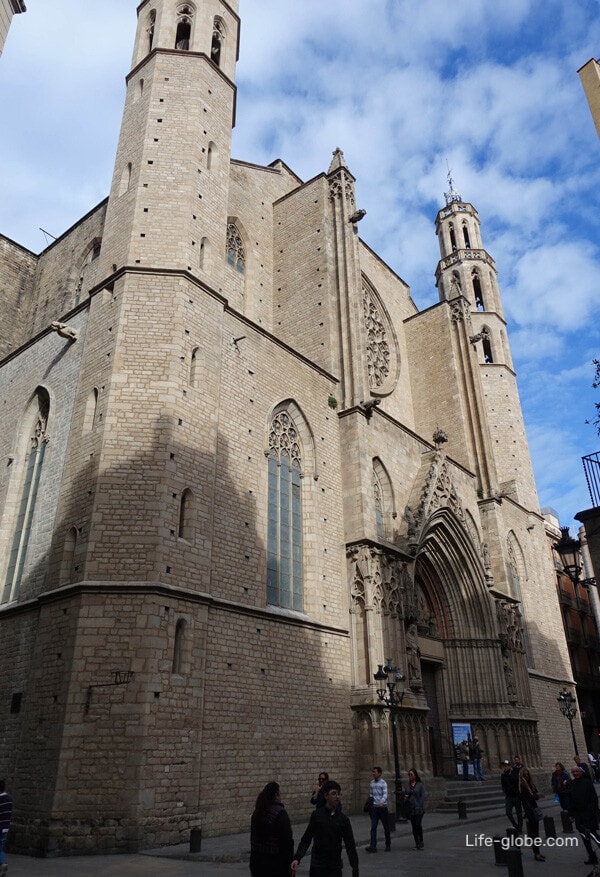
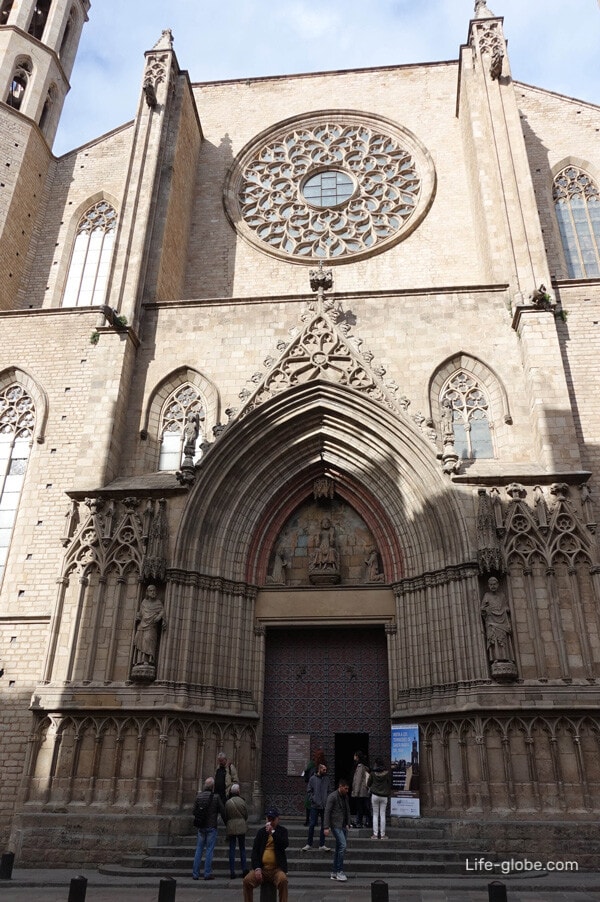
The interior is modest and majestic, but in contrast to exterior, gives the impression of light and space. This is the type of a Basilica, with three aisles forming a single space with no transepts and architectural boundary between nave and presbytery. In the Church you can also visit the towers, the roof, the gallery and the crypt of the Basilica.

The Basilica of Santa Maria del Mar is surrounded by the narrow streets of the Ribera, and its main facade overlooks the homonymous square (Plaça de Santa Maria).
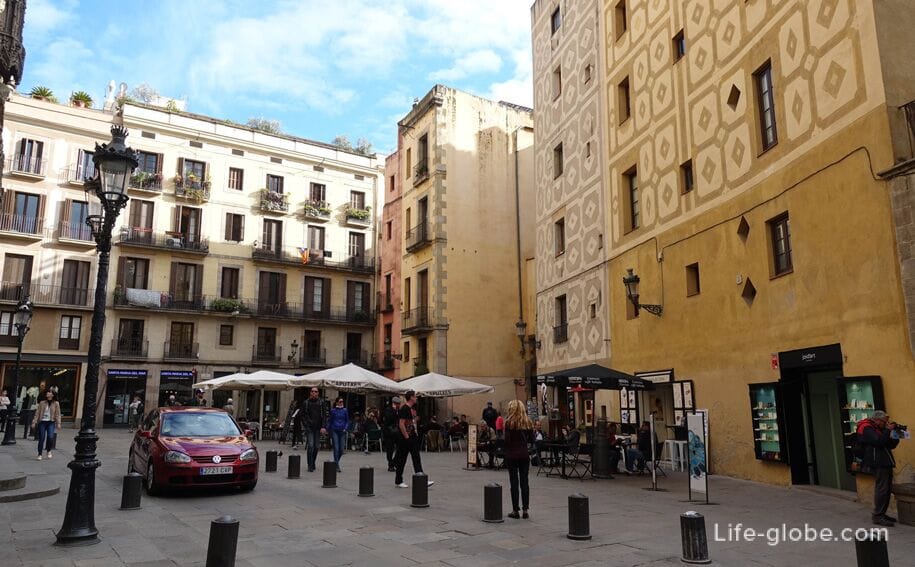
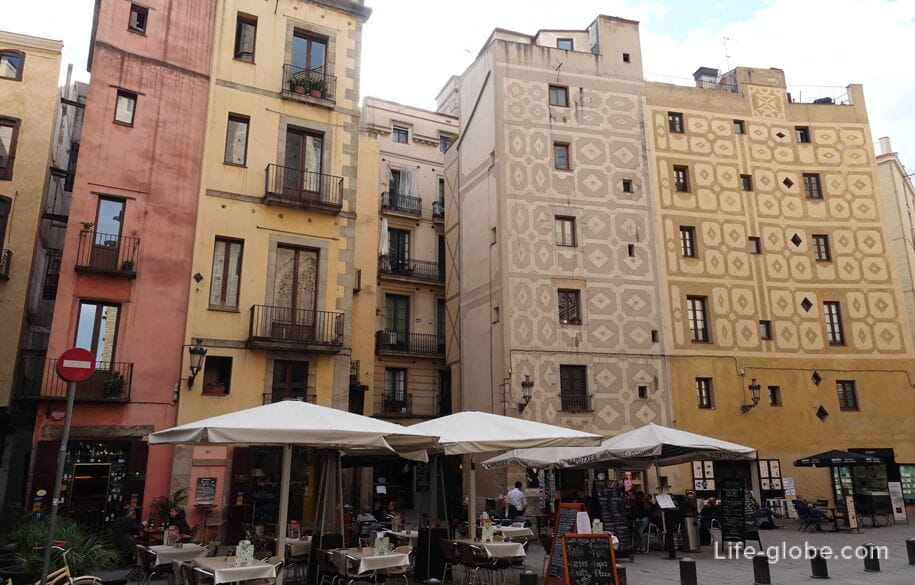
Picasso Museum (Museu Picasso de Barcelona), which houses one of the most extensive collections of artworks by the Spanish artist 20th century, Pablo Picasso.
Highlights of the collection include two of the first major works of the Creator: the First Communion (1896) and Science and Charity (1897). In particular, the Museu Picasso reveals Picasso's relationship with Barcelona that was formed in his youth and continued until his death.
The Museum is housed in multiple adjoining medieval palaces in Barcelona and is located on Montcada street, 15-23 (Carrer Montcada).
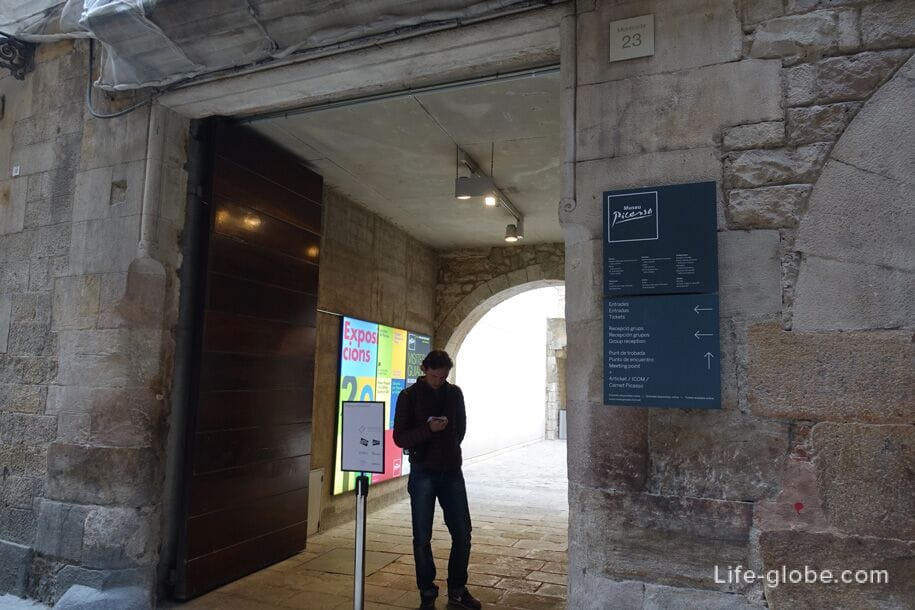
French train station (Estació de França) is the second busiest railway station of the city after Barcelona-Sants in terms of a regional and long-distance transportation.
Initially, the station ball built in the 19th century as the main destination for trains arriving from France (as its name suggests), and to service the North-Eastern part of Catalonia and the Costa Brava.
Rebuilt and re-opened for the International exhibition of 1929, the station consists of two monumental buildings that make up the station, which was designed by architect Pedro Muguruza and opened by king Alfonso XIII. In General, the station structure has a height of 29 meters and a length of 195 meters. The station was closed for renovation between from 1988 and 1992 and re-opened for the Olympic games in 1992.
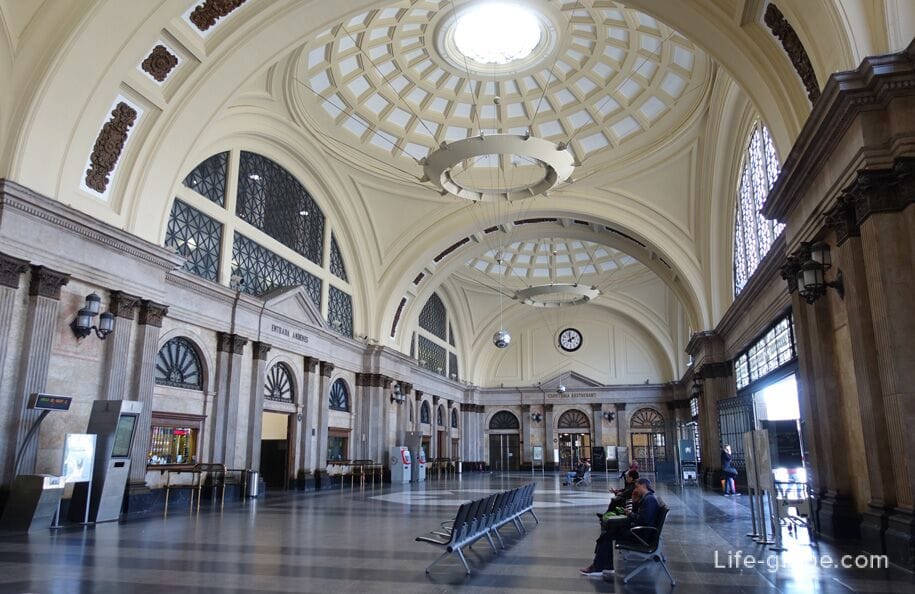
Archaeological Baluard de Migdia (Baluard de Migdia i Muralla de Mar) is one of the eleven bastions, which had the medieval wall of Barcelona, while all the city walls were demolished in the 19th century. Bastion was opened in 2007 and his current small the remains are part of the architectural and historical heritage of the city of Barcelona.
Notable street Laietana (Laietana Via), separating the Gothic quarter and sub-area of Sant Pere, Santa Caterina and La Ribera.
Via Laietana - one of the main thoroughfares not only the Old city but of the whole of Barcelona. She is known primarily art Nouveau, art Deco and Neoclassicism. Read more about the street Laietana, Barcelona...

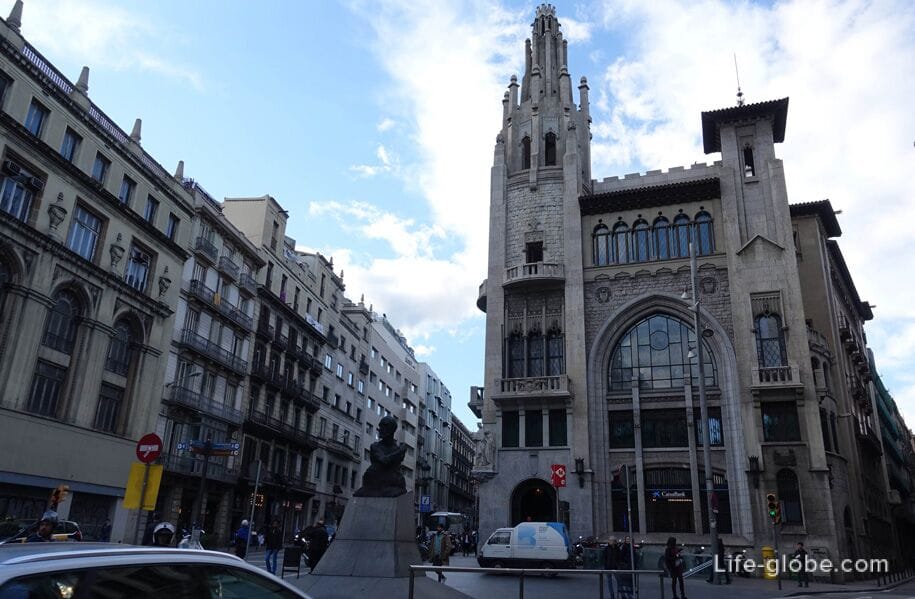
All accommodation (hotels, apartments, guest houses, hostels etc.) in subarea San Pere, Santa Caterina and La Ribera Barcelona's Old town and the surrounding area, you can view and book here
